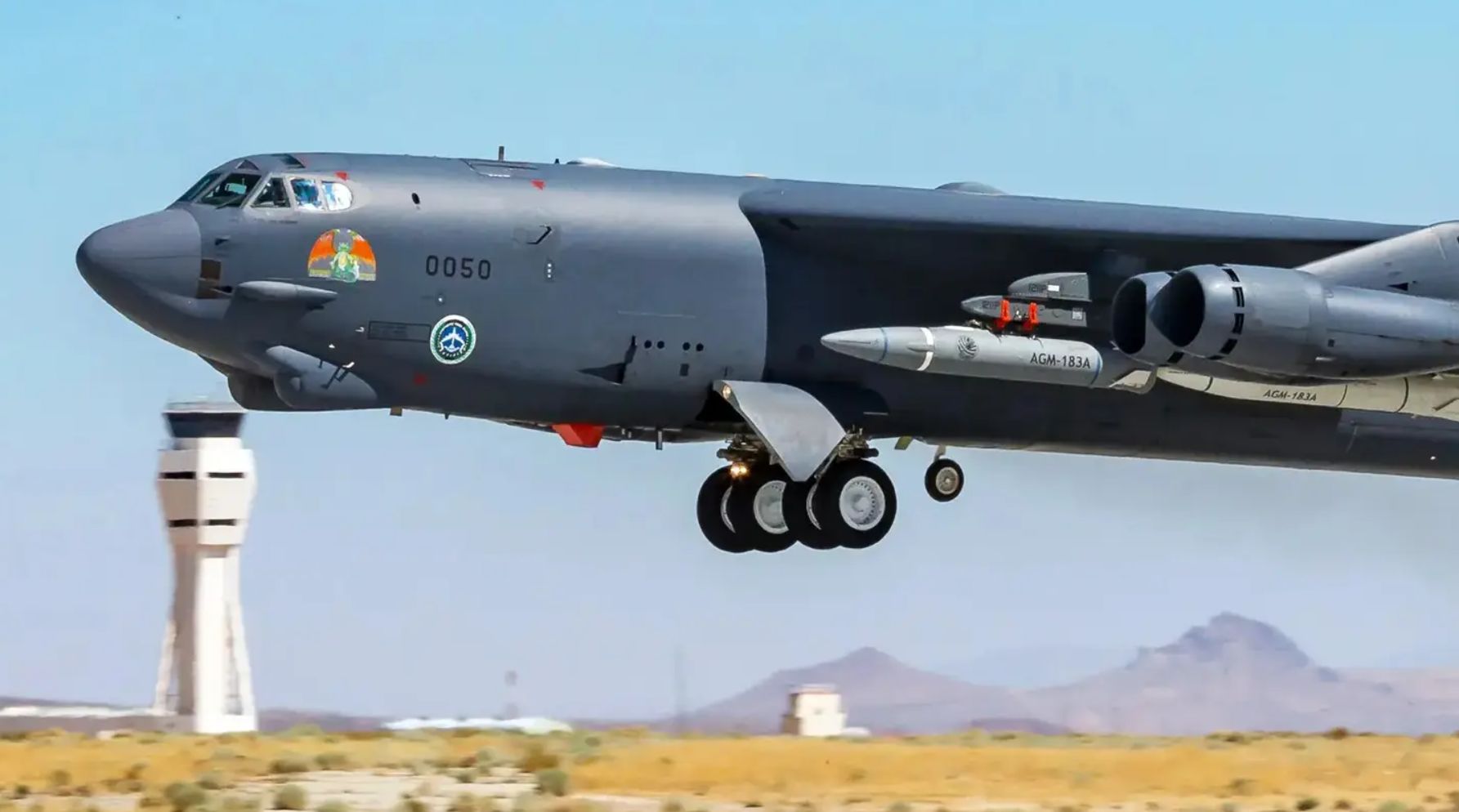The latest test of US air-launched hypersonic missile was not successful, US Air Force Secretary Frank Kendall confirmed.
“Those tests that we just conducted were not successful. We did not receive data from the tests that we needed,” he said at a congressional hearing.
The test was conducted on March 13, when an AGM-183 ARRW missile was fired from a B-52H strategic bomber off the coast of California.
Earlier in December, the US successfully tested a hypersonic air-to-ground missile prototype off the coast in California, reaching more than five times the speed of sound, according to US Air Force.
“A B-52H Stratofortress successfully released the first All-Up-Round AGM-183A Air-launched Rapid Response Weapon off the Southern California coast, December 9,” the US Air Force said in a press release. “Following the ARRW’s separation from the aircraft, it reached hypersonic speeds greater than five times the speed of sound, completed its flight path, and detonated in the terminal area.”

Earlier, EurAsian Times had reported that the US Air Force had validated the loading functions for its first air-launched hypersonic missile from the B-52H aircraft at the Barksdale Air Force Base.
The US Air Force’s said the Air-Launched Rapid Response Weapon, or ARRW, could be deployed by 2023, which now looks unlikely.
The AGM-183A ARRW is a long-range hypersonic missile developed for the US Air Force. The weapon will dramatically enhance USAF’s strike capability at stand-off ranges, allowing it to pound heavily fortified targets.
The ARRW travels at five times the speed of sound, allowing the USAF to strike critical enemy targets at lightning speed and defy any missile defense system.
The USAF noted that the development of hypersonic weapons was accelerated due to the National Defense Authentication Act section 804 Rapid Prototyping, which is part of the Rapid Fielding program. The program promotes rapid weapon development in specified instances.
Why Hypersonic Weapons
Russia and China have raced ahead in deploying hypersonic weapons, with Russia even using its Mach 5+ missiles in the Ukraine war.
There are two types of hypersonic weapons — hypersonic cruise missiles and hypersonic glide vehicles. Hypersonic weapons, by definition, travel five or more times the speed of sound.
Hypersonic cruise missiles, powered by scramjet, are restricted below 100,000 feet, while hypersonic glide vehicles can travel higher. Compared to a ballistic (parabolic) trajectory, a hypersonic vehicle is capable of large-angle deviations from a parabolic trajectory.
The deadly weapons have the speed of a ballistic missile and the maneuverability of a cruise missile. They can maneuver between varying altitudes and azimuths, making them harder to detect. Currently, there are no defense systems in the world that can intercept hypersonic weapons.
- Mail us at etdesk (at) eurasiantimes.com
- Follow EurAsian Times on Google News